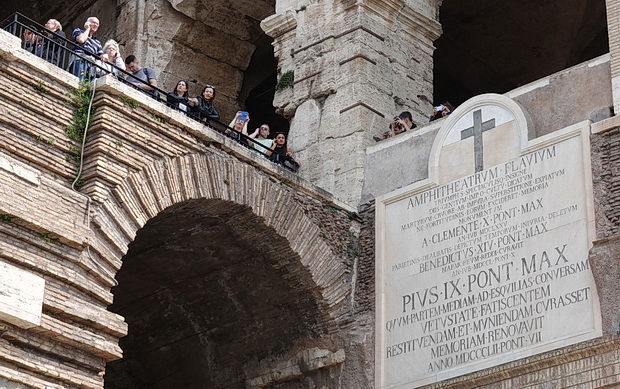
An oval amphitheatre in the centre of the city of Rome, Italy, the Colosseum (or Coliseum) is a masterpiece of ancient craftsmanship.
Constructed of travertine, tuff, and brick-faced concrete, it is the largest amphitheatre ever built.
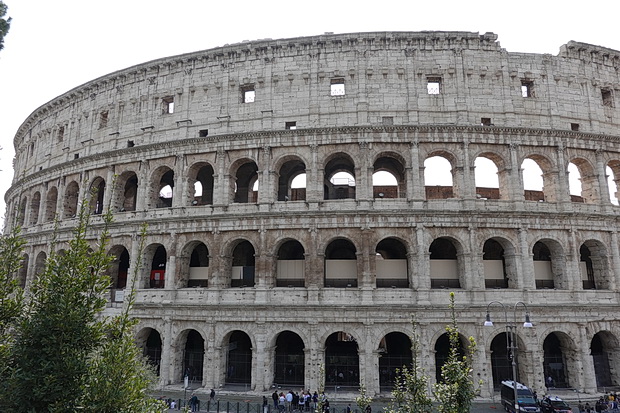
Construction began under the emperor Vespasian in AD 72 and was completed in AD 80 under his successor and heir, Titus, with further modifications made during the reign of Domitian (81–96).
The Colosseum could hold, it is estimated, between 50,000 and 80,000 spectators, having an average audience of some 65,000 who would pack in to watch grisly gladiatorial contests, animal hunts, executions, re-enactments of famous battles, and dramas based on Classical mythology.
Although partially ruined because of damage caused by earthquakes and stone-robbers, the Colosseum is still an iconic symbol of Imperial Rome and is listed as one of the ‘New 7 Wonders of the World.’

Dodgy ‘staff’ everywhere
If you visit, watch out for groups of fake ‘staff’ and ‘official guides’ who try to take advantage of the chaotic online ticketing and upsell you extras on top of the admission price. Despite numerous invites for us to pay extra to ‘skip the line’ we were fine with our pre-paid ticket (which gave us an allocated time to enter).
The best – and cheapest – way is to buy the ticket directly from the official Colosseum website and buy a basic entrance ticket for the Colosseum and Forum/Palatine there, which is currently €12. Otherwise, you can buy an entrance ticket with a downloadable audio guide for €18.
This page offers advice on the best time to visit the Colosseum.
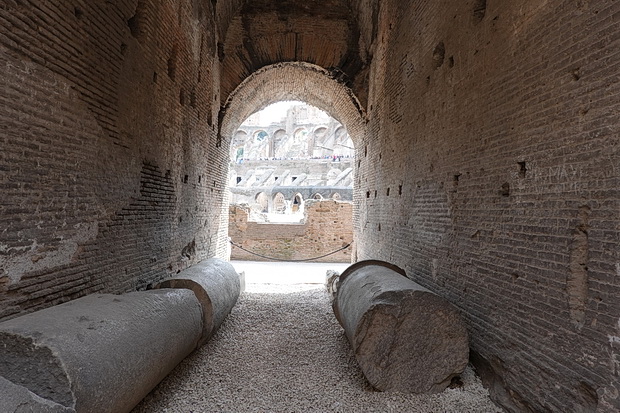
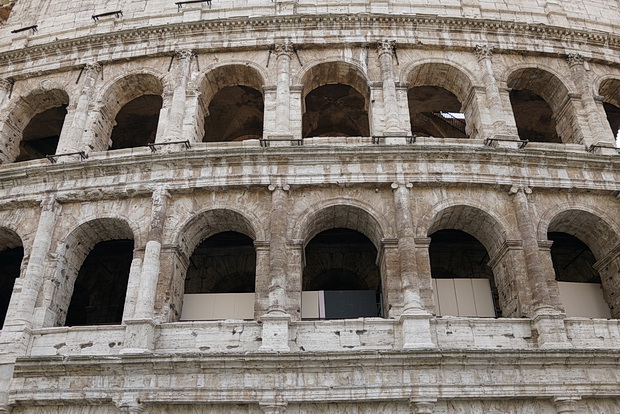
Wikipedia has more detail about the construction of this structure:
Unlike earlier Greek theatres that were built into hillsides, the Colosseum is an entirely free-standing structure and derives its basic exterior and interior architecture from that of two Roman theatres back to back.
It is elliptical in plan and is 189 meters (615 ft / 640 Roman feet) long, and 156 meters (510 ft / 528 Roman feet) wide, with a base area of 24,000 square metres (6 acres). The height of the outer wall is 48 meters (157 ft / 165 Roman feet). The perimeter originally measured 545 meters (1,788 ft / 1,835 Roman feet). The central arena is an oval 87 m (287 ft) long and 55 m (180 ft) wide, surrounded by a wall 5 m (15 ft) high, above which rose tiers of seating.
The outer wall is estimated to have required over 100,000 cubic metres (3,531,467 cubic feet) of travertine stone which were set without mortar; they were held together by 300 tons of iron clamps.
However, it has suffered extensive damage over the centuries, with large segments having collapsed following earthquakes. The north side of the perimeter wall is still standing; the distinctive triangular brick wedges at each end are modern additions, having been constructed in the early 19th century to shore up the wall. The remainder of the present-day exterior of the Colosseum is in fact the original interior wall.
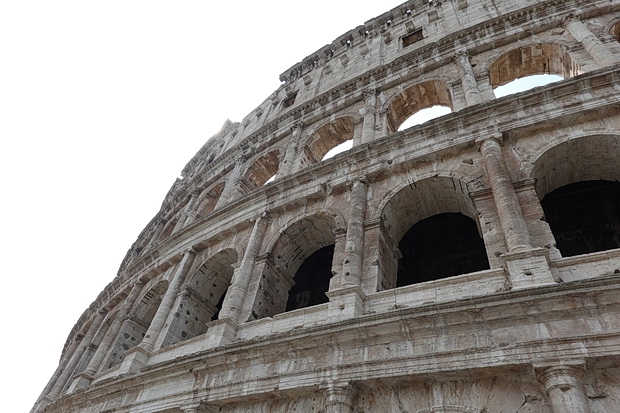
Even back then, they had health and safety sorted:
The Colosseum’s huge crowd capacity made it essential that the venue could be filled or evacuated quickly. Its architects adopted solutions very similar to those used in modern stadiums to deal with the same problem. The amphitheatre was ringed by eighty entrances at ground level, 76 of which were used by ordinary spectators. Each entrance and exit was numbered, as was each staircase. The northern main entrance was reserved for the Roman Emperor and his aides, whilst the other three axial entrances were most likely used by the elite. All four axial entrances were richly decorated with painted stucco reliefs, of which fragments survive. Many of the original outer entrances have disappeared with the collapse of the perimeter wall, but entrances XXIII (23) to LIV (54) survive.
Spectators were given tickets in the form of numbered pottery shards, which directed them to the appropriate section and row. They accessed their seats via vomitoria (singular vomitorium), passageways that opened into a tier of seats from below or behind. These quickly dispersed people into their seats and, upon conclusion of the event or in an emergency evacuation, could permit their exit within only a few minutes. The name vomitoria derived from the Latin word for a rapid discharge, from which English derives the word vomit.
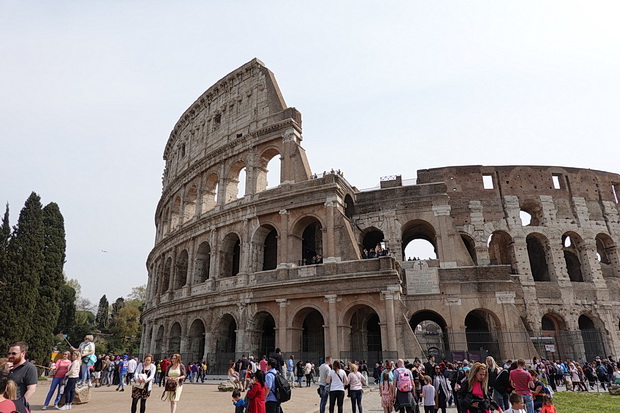
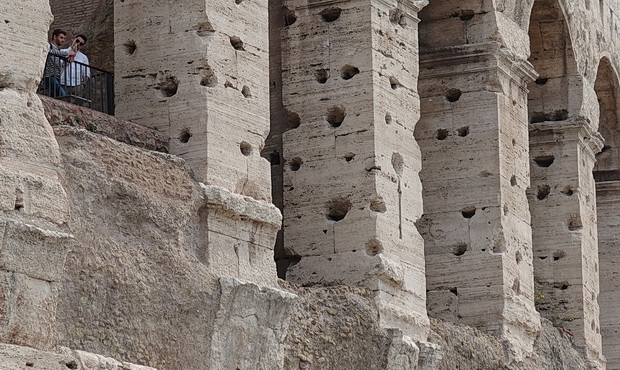
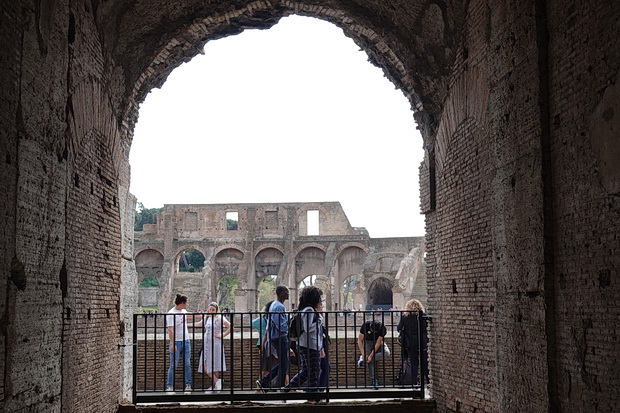

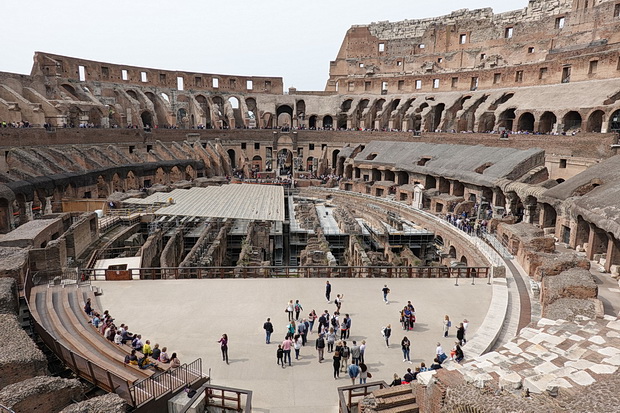
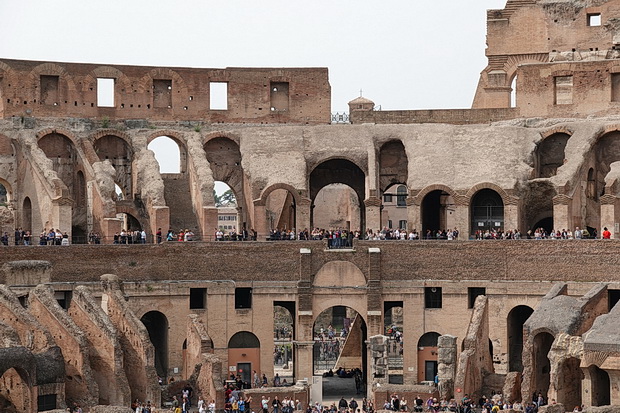
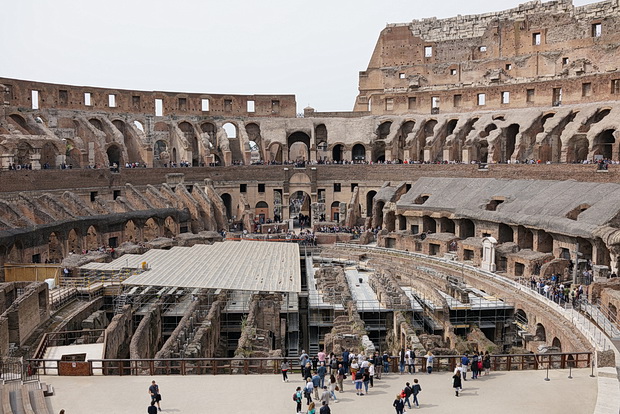
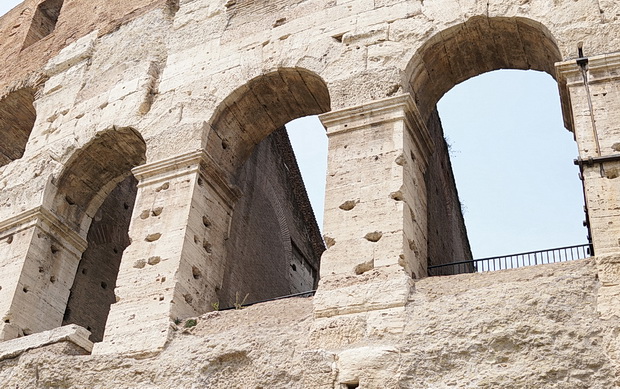
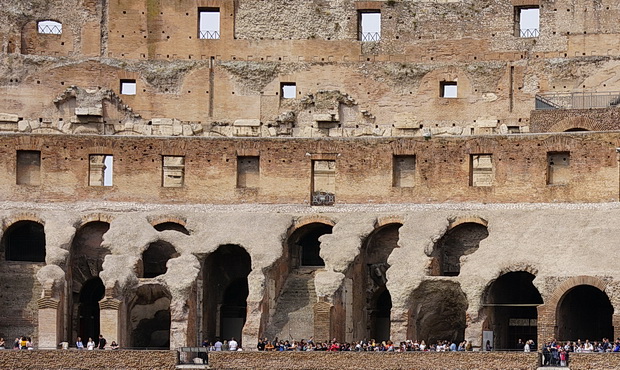
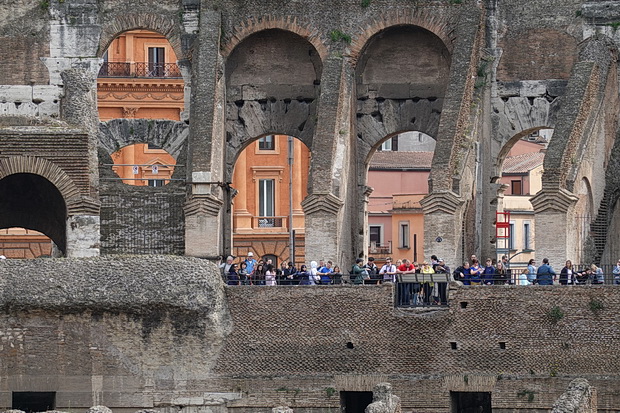
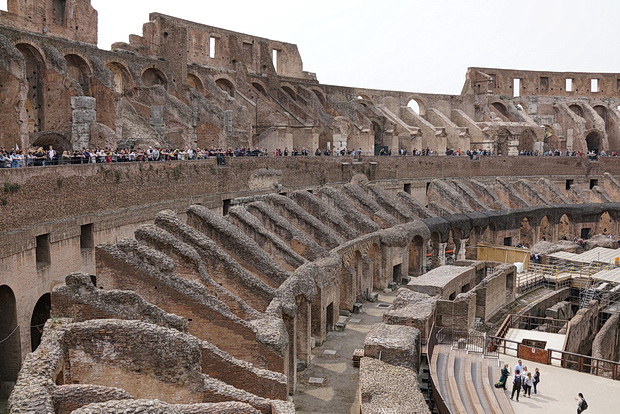
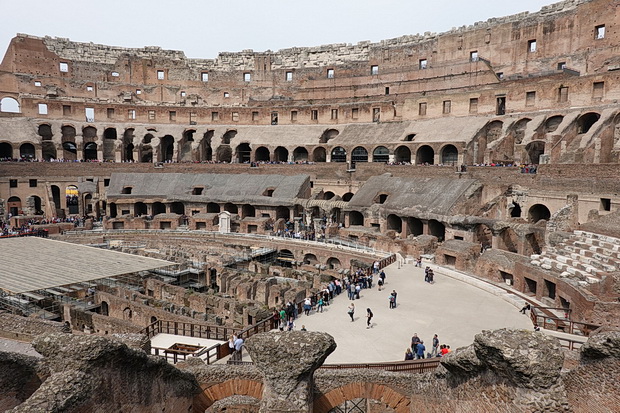
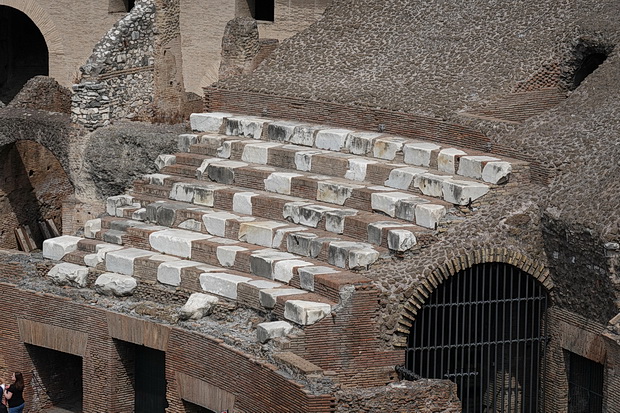
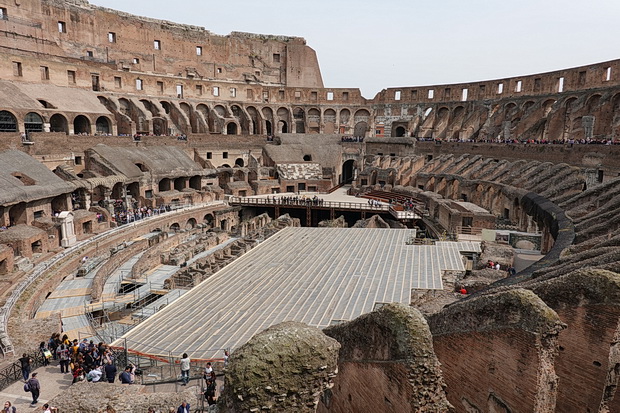
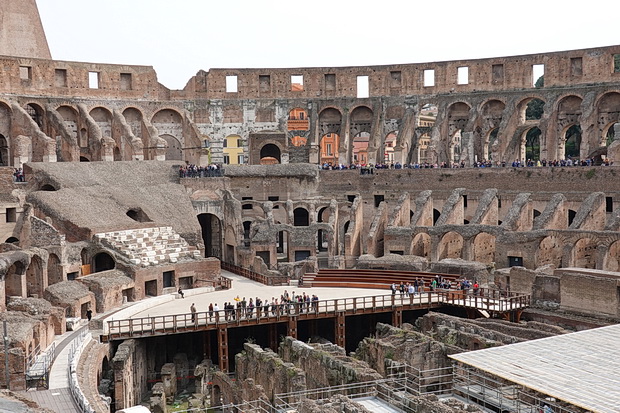
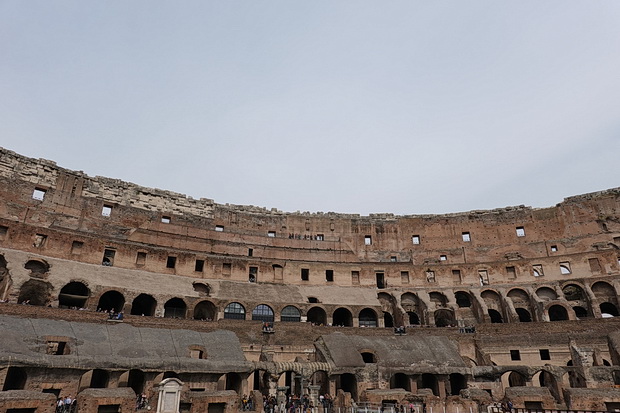
Colosseum info
Opening times
Oct – Feb 15: 8.30am – 4.30pm
Feb 16 – Mar 15: 8.30am – 5.00pm
Mar 16 – Mar 30: 8.30am – 5.30pm
Mar 31 – Aug 31: 8.30am – 7.15pm
Sep 1 – Sep 30: 8.30am – 7.00pm
Oct 1 – Oct 26: 8.30am – 6.30pm
Oct 27 – Dec 31: 8.30am – 4.30pm
(last admission always 1 hour before close)
Only closed Christmas day and New Year’s Day
Nearest metro station:
Colosseo (Line B)











